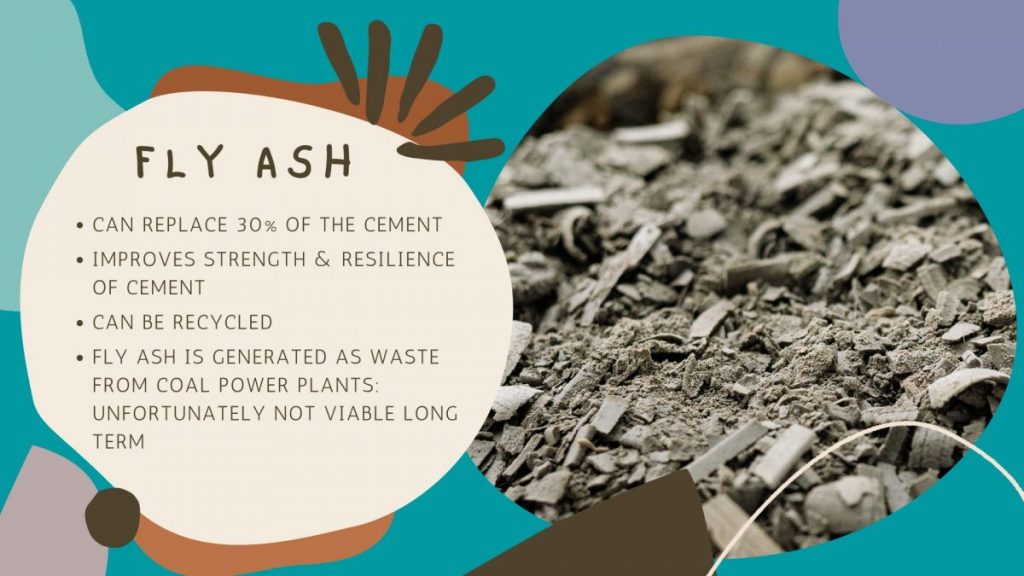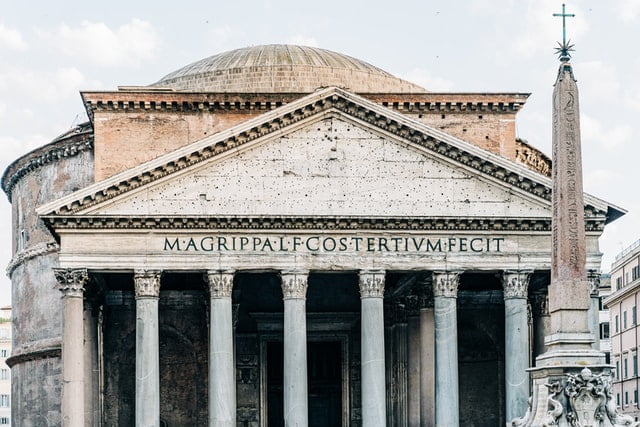How can we make sustainable concrete? Are there any alternatives or technologies to make green concrete? Let’s have a quick look at some of the ways to improve concrete sustainability!
By far humanity’s most widely used building material, and the second most used material on the earth behind water, concrete is everywhere in our world. Why is sustainable concrete important? Sadly, this immense level of production comes with severely negative effects on the environment.
For example, the production of cement alone creates an immense amount of carbon dioxide, accounting for about 8% of worldwide greenhouse gas emissions. Concrete production also requires large amounts of water, which is an especially large concern when it is being produced in drought-prone areas, and it can also be responsible for severe air pollution and other health hazards.
For a quick summary of this article just watch the video below, then keep on reading for more details! For more amazing sustainability videos, visit our video gallery and subscribe to the sustainability success youtube channel.
Why is sustainable concrete important?
Given its widespread use finding ways to make green concrete, together with sustainable urban design, would give a great contribution to the important issue of sustainable development.
The demand for concrete will only continue to increase in the future, so finding more environmentally friendly ways to produce it, and sustainable materials that can replace it where possible is essential and will have a huge impact on making our world more sustainable. But what are some of the sustainable concrete options we have to improve sustainability?

eco friendly concrete substitutes – 4 Green alternatives
In this section we will go through 4 ways to make a more sustainable concrete construction and reduce its environmental impact.
It’s no surprise that we use so much concrete. The costs of its production may be very high for the environment, but there are good reasons that concrete is so widely used as a building material. Concrete is highly versatile, and well designed concrete buildings can be durable, highly energy-efficient and have a long lifetime.
Concrete structures are also resilient to the severe weather that climate change may cause. It’s unlikely that our use of concrete will reduce by a large amount anytime soon, but if we can make the use of sustainable alternatives more widespread, it would still make a big impact on protecting the environment and reducing greenhouse gas emissions.

Here are a few sustainable concrete alternatives to make it more eco-friendly or replace concrete altogether:
- Bamboo is a very useful material for structures like houses. It is very strong, yet flexible and light. Bamboo plants grow extremely fast, absorb a lot of carbon, and are capable of growing on land that would be useless for growing trees and other plants. This makes it a great sustainable building material. One drawback of bamboo as a building material is that it is quite susceptible to decay, but this can be prevented by treating it properly and keeping it dry.
- Wood is one of the oldest materials used for construction. If managed properly, it is a renewable resource and it can be a good alternative to concrete.
- Use fibres made of recycled plastic to replace the steel mesh in concrete. This technology developed by PhD Shi Yin and Dr. Rabin Tuladhar allows the production of strong polypropylene fibers by recycling plastic waste. Those fibers are strong enough to replace the steel mesh used for concrete in construction. Finally, it is possible to reduce the emissions by about 90% compared to the use of a steel mesh for concrete.
- Use recycled plastic to replace some of the sand used. This would be highly beneficial as less sand would be needed for the concrete (the extraction of which has very negative effects on the environment), and it would find another use for the huge amount of plastic waste we have generated. However, concrete made in this way appears to be weaker and less fire-resistant than normal concrete, so it may only be useful where those factors aren’t a concern unless a way to remedy those weaknesses is found.
- Rammed earth, which is built using compacted soil or other materials from the ground, is an ancient building technique that may have an important role in the modern world as well, as it generally has an extremely low environmental impact. The earth that’s required is able to be sourced locally which minimizes the environmental impact of transporting it, and the soil used is generally subsoil, rather than the fertile and life-giving topsoil. Rammed earth buildings can also have an incredibly long lifespan when properly built. Certainly an amazing example of achieving green tech goals by using an ancient method. However, there are also notable disadvantages of rammed earth that may limit how widely it can be used. For example, it can be more expensive, labor-intensive, and take longer to build with rammed earth compared to concrete and other materials, and specialist knowledge is needed to ensure the building is of good quality. Some types of soil may be inappropriate for use, and there are concerns about durability. It is possible to significantly improve the durability and resistance to the elements of rammed earth by using cement, which is common practice in Australia, however, this does compromise the sustainability of the material to a degree. Despite these issues, rammed earth still has fantastic potential as a sustainable building material.
Sustainable concrete is one of the growing examples of sustainable development and hopefully, the construction industry will move more and more toward eco-friendly alternatives to concrete.
Add fly ash to concrete
Cement production accounts for an immense 8% of all global emissions. This means that finding more sustainable methods of producing cement alone would make the use of concrete vastly more sustainable. Better yet would be a way to partially or completely substitute cement for a sustainable material.

Fly ash is a great eco friendly cement alternative. Produced in coal-fired power plants, fly ash can be recycled, and among other uses, it can be utilised to partially replace the cement used in concrete.
Fly ash improves the performance of concrete, such as its workability, resilience and strength, giving it a wide range of potential uses.
Fly ash has similar properties to volcanic ash, which was used by the Romans to greatly strengthen the durability of their buildings and structures.
Fly ash only replaces a portion (usually up to 30%, but sometimes much higher) of the cement in concrete. However, the amount of greenhouse gas emitted from the production of cement is so huge that even a partial reduction in its use will make a very good impact on the sustainability of all concrete production, and a significant reduction in global emissions.
Unfortunately, however, fly ash will not be available for widespread use forever since it is produced as a waste product in coal-fired power plants. As more of these power plants are shut down and replaced with better methods of energy production in the future, fly ash will eventually become too difficult to acquire in large quantities.
Best practices to make concrete more green
Increasing the Lifespan of Buildings

Many structures from ancient times, such as the nearly 2000 year old Roman Pantheon in Rome, were made with concrete, though it’s unlikely that many of our concrete buildings will last nearly as long as that.
Many modern concrete buildings throughout the world today are not built with longevity in mind, as many corners are often cut during construction in order to keep costs low. Many of these buildings will begin to develop serious issues within just a few decades of being built, and if these issues are neglected the building could become dangerous for the inhabitants, and it is likely to have had only a short lifespan before being demolished.
Planning for the future is also very important. Many well-built and damage-free concrete buildings end up being brought down earlier than they should simply because they have no further use for the area they were built in.
Another issue is preventing erosion and decay of the concrete. Concrete is fairly resistant to weather, but measures still need to be taken to protect it from the elements. For example, concrete is very often reinforced with steel, and if water manages to reach the steel inside, the steel will rust and expand, weakening the structure and cracking the concrete. Ensuring that the concrete structures we build are designed to last a long time is essential if we want to avoid having to constantly rebuild badly designed, decaying buildings.
Recycling Concrete

As long-lasting as concrete buildings can be when designed well, none will last forever, and many buildings built today will come down long before they should. This generates a huge amount of waste, but the concrete used in these buildings doesn’t have to be wasted. Concrete is often disposed of in landfills, which is wasteful and causes pollution, but thankfully concrete recycling is becoming much more common, as it is generally cheaper, and environmental responsibility is becoming much more important. The European Union requires that at least 70% of all non-hazardous construction and demolition waste, which comprises a third of all waste in the EU, must be re-used or recycled.
Not only does recycled concrete avoid taking up space in landfills, and reduces the emissions and costs from its transport to them, but its use also reduces the need to produce other new materials in its place. It has a wide variety of uses, as large or small pieces can be reused for new constructs such as roads or pavement, or even crushed and reused as material for making new concrete.
Learn more
These are only a few of the many possibilities we have for making sustainable concrete. The advantages of green technology are becoming more and more evident in this industry, so it’s certain that we’ll discover better technologies for concrete production, and sustainable alternatives to concrete, in the future.

